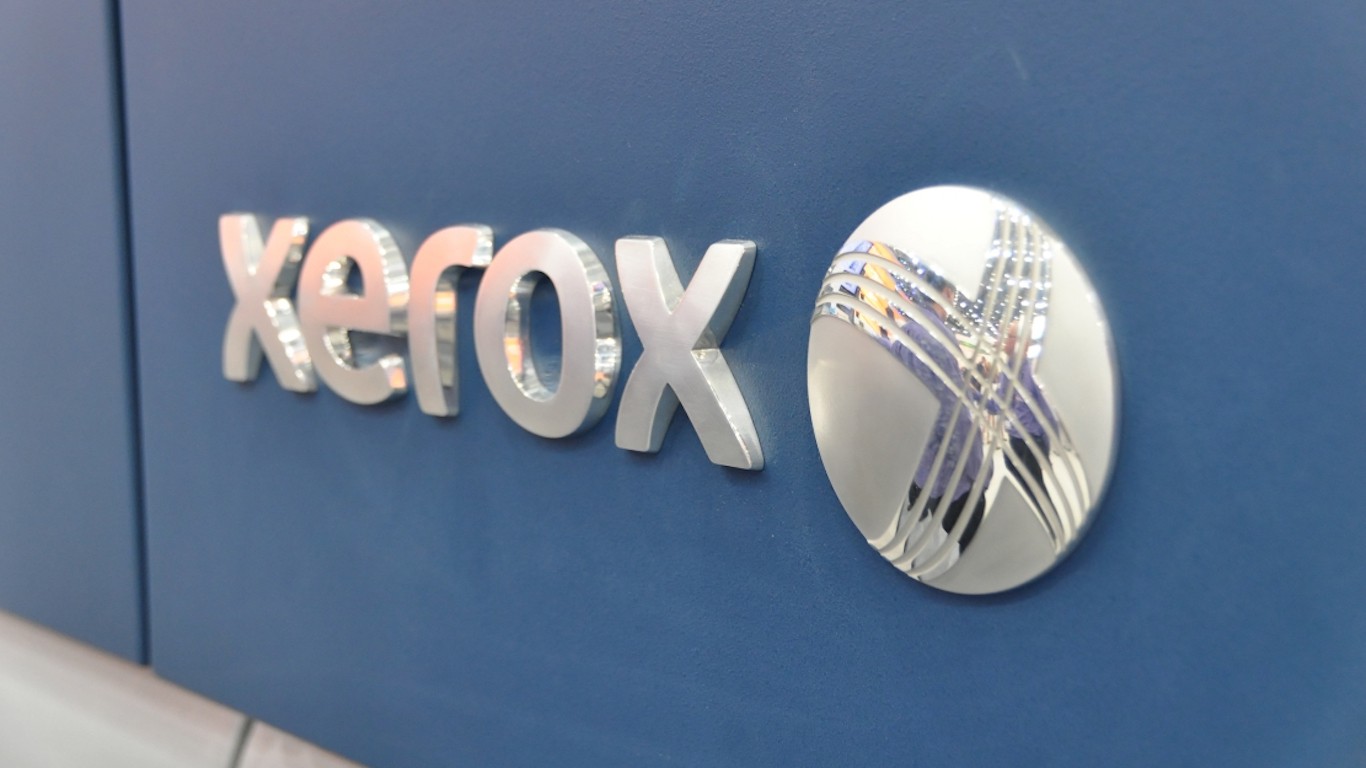Technology
4 Down and Out Tech Stocks Under 10 Times Earnings With Solid Dividends

Published:
Last Updated:

The bull market may now be more than 10 years old, but as 2019 progresses, the reporting about recessions and trade wars gets amplified every time the market drops. Many investors may have forgotten that the Dow Jones industrials and S&P 500 are still up by double-digits this year. They also may have forgotten that unemployment is hovering close to 3.7% and that gross domestic product is still growing.
While the markets have been called out over time as crawling up a wall of worry, there are many reasons that investors might be worried now. Technology stocks are a place where many investors can still find bargain-basement valuations at less than 10 times earnings. Many technology stocks are now even solid dividend payers, and that matters when the yield on the 10-year Treasury is below 1.5%, and it is under 2.0% on the 30-year Treasury yield.
It may seem to be a hard time to look for value in technology because every company theoretically has some exposure to China and to a slowing global economy. That said, it’s a strategy that many contrarian investors would be doing.
24/7 Wall St. has highlighted four companies that are not related in their core businesses, valued at 10 times earnings and likely to keep paying strong dividends ahead. We have used forward earnings estimates and consensus analyst target prices from Refinitiv, and additional color has been added on each.
HP Inc. (NYSE: HPQ) is the consumer-facing portion of what’s left of the Hewlett-Packard breakup. It makes personal computers and printers, and some investors just don’t care about that any longer. HP’s shares were at $21.00 at the end of July, but a drop in the markets on the trade war and tech in China and an earnings disappointment has taken this stock back under $18. HP’s revenues are expected to be more or less flat in 2019 and 2020, but still above $58 billion, and its earnings per share of $2.02 in 2018 is expected to rise to $2.21 in 2019 and $2.24 in 2020. HP is now valued at just eight times expected earnings, and its dividend yield is 3.6%.
Shares closed at $17.79 most recently, in a 52-week trading range of $17.10 to $27.08 and with a consensus target price of $20.66. Its market cap is still almost $27 billion.
International Business Machines Corp. (NYSE: IBM) is considered a company full of old nerds wearing short-sleeve button-downs with pocket protectors by many people in IT these days. It’s a stereotype that may no longer be fair as the company’s strategic imperatives around cloud, artificial intelligence and other areas may have just been given a shot in the arm from its $34 billion acquisition of Red Hat that has now closed.
The big question to be asked is if the Red Hat team can leverage through the IBM teams and customers to win more business, and what would be $4 billion in added revenues may ramp to $10 billion in the next decade. IBM is a company in which most investors, including Warren Buffett himself, have thrown in the towel. What if this time is different? At $132.50 a share, IBM is valued at almost exactly 10 times its blended 2019 and 2020 earnings estimates.
IBM has a 52-week range of $105.94 to $154.36 and a dividend yield that is nearly 5% due to its low share price. It’s hard to imagine that IBM was more than a $200 stock back in 2013, and the consensus target price today is not even $153.00. IBM’s market cap is still $117 billion, despite it being down so much and unloved by the investing community.
KEMET Corp. (NYSE: KEM) is a leader in capacitors and other electrical components inside the guts of anything and everything in technology. The company has now operated for 100 years. This stock has remained under the radar of many investors for years, with a market cap that is right at $1 billion and valued at just six times forward earnings. Where it is weak is in the 1.2% dividend yield, with a payout ratio of only about 10%.
On August 1, KEMET exceeded expectations on its preliminary earnings report and projected solid margins despite inventory adjustments and a slower cycle in Europe and in its auto-sector sales. Kemet ended the latest quarter with cash and investments of approximately $217.3 million and net debt of $94.8 million. With a low-cost financing of its debt, the company said that will execute on its long-term growth strategy for the company and provide the ability to return capital to its shareholders. Are a larger dividend and a buyback going to come this way?
KEMET closed at $16.92 a share, in a 52-week range of $15.55 to $26.60. The consensus target price is up at $27.00.
Xerox Holdings Corp. (NYSE: XRX) is a technology stock that may have been a better story for your grandparents than for investors in the new technology realm. What stands out here after a reorganization and split is that Xerox was up 80% year to date at the start of July. Then the company managed to beat earnings, but it lowered its annual revenue guidance and had said that its board would declare the normal dividend in a post-restructuring in August.
Xerox shares slid from $36.00 at the start of July down to its most recent close at $27.82. The revenue expectations are still contracting, but with a blended earnings of $4.00 per share expected ahead, Xerox is valued at just seven times earnings estimates.
Xerox’s prior dividend of $1.00 per year was generating better than a 3% yield. Its consensus target price is $37.25, and its 52-week trading range is $18.58 to $36.58.
Thank you for reading! Have some feedback for us?
Contact the 24/7 Wall St. editorial team.